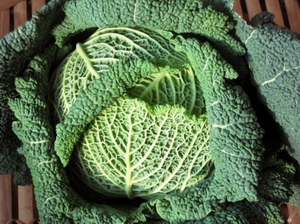 pound derived from cruciferous vegetables such as cabbage, cauliflower and broccoli protected mice and rats from lethal doses of radiation, according to researchers from the Georgetown University Medical Centre (GUMC).
pound derived from cruciferous vegetables such as cabbage, cauliflower and broccoli protected mice and rats from lethal doses of radiation, according to researchers from the Georgetown University Medical Centre (GUMC).The study, published on 14 October 2013 in the Proceedings of the National Academy of Sciences (PNAS), suggests the compound, already shown to be safe for humans, may protect normal tissues during radiation therapy for cancer treatment and prevent or mitigate sickness caused by radiation exposure.
The compound, known as DIM (3.3’-diindolylmethane), previously has been found to have cancer preventative properties.
“DIM has been studied as a cancer prevention agent for years, but this is the first indication that DIM can also act as a radiation protector,” said Eliot Rosen MD, PhD, the study’s corresponding author, of Georgetown Lombardi Comprehensive Cancer Centre, a part of GUMC.
Meanwhile, Australian experts have responded to the study with interest, saying that further research will be needed to determine the doses of DIM required for therapeutic use.
“There have been many attempts at developing radioprotective agents that protect normal tissues but not cancer,” said Professor Ian Olver, CEO of Cancer Council Australia. “Amifostine was one such drug which had some effect but itself had side effects which limited its use,” he said.
“Many drugs are derived from plants and it is not surprising that a chemical in vegetables could have these properties,” Professor Olver said.
Professor Michael Fenech, an expert from the CSIRO agreed that there was a need to develop effective countermeasures to the damaging effects of radiation therapy.
“The authors of the study showed that in the mouse DIM activates DNA repair in normal cells but not in cancer cells,” said Professor Fenech, Research Group and Stream leader for the CSIRO Animal, Food and Health Sciences. “This suggests that DIM could make it possible to protect normal tissue during radiation therapy and may also allow higher doses of radiation to be used to increase the certainty that the cancer is eliminated,” he said.
“Increasing the resistance of normal tissue against radiation-induced DNA damage may also be useful to minimise morbidity and death after radiation accidents or mitigate against the risk of cancer from exposure to other DNA-damaging agents,” Professor Fenech said. “It would be interesting to know what dose of DIM or broccoli is required to produce similar effects in humans,” he said.
The benefit of cruciferous vegetables in preventing cancer has been the subject of research in studies earlier in 2013 too. Australian Food News reported in August 2013 that other compounds found in broccoli can “retune” cellular processes that get disrupted as the body ages, and contribute to a reduced risk of cancer.





